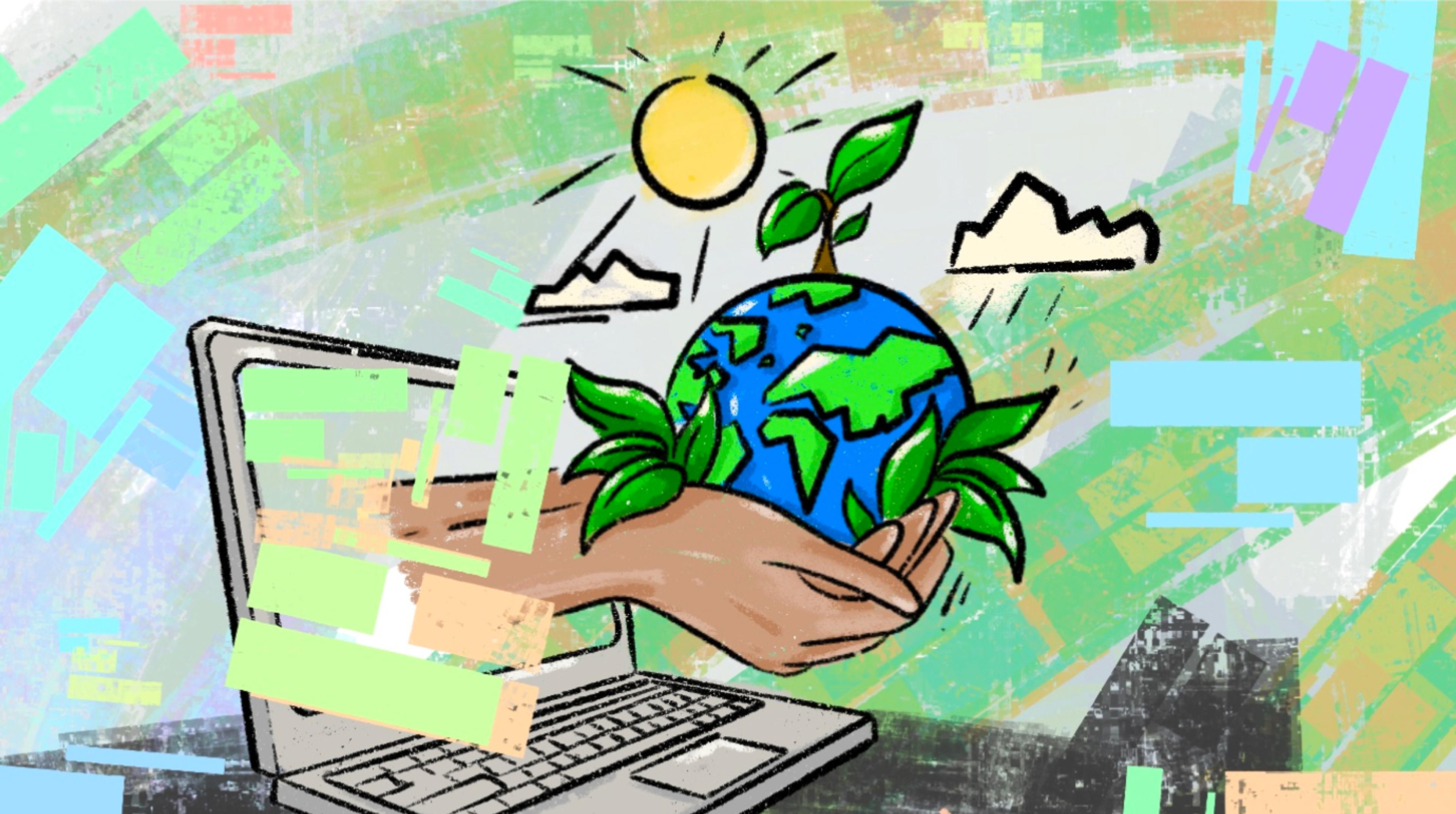Being BCorp: building websites that don’t cost the Earth

Izzy Payne
27.03.2023

Greenhouse emissions. You’ve heard of them. You know that we need to reduce them to save our planet. But did you know that the internet is responsible for a good chunk of our daily greenhouse gas emissions? Here’s how Neverbland builds websites with the planet in mind.
Before working at Neverbland I had no idea that websites and internet usage contributes to emissions. I used to think of the internet as this great, invisible force that flows freely around us, not as a force creating carbon emissions.
So to avoid appearing ignorant, I’ll hand you over to Alain Ritchie, Tech Director at Neverbland. He took the time to outline the problem for us, and detail how Neverbland builds websites that are good for our clients and our planet.
How does the internet produce emissions?
Alain: Technology is a real, large-scale contributor to greenhouse emissions. In fact, a 2020 Boston Consulting Group study found that the internet alone is responsible for approximately 2% of global greenhouse gas emissions. That’s around 1 billion tonnes per year; on par with the aviation industry.
Of course, the truth is that it’s an invisible / non-conscious emission to most people. How on earth does scrolling through Insta generate carbon emissions? Well, it’s all about the infrastructure that makes it happen. Everything from charging your phone/laptop to powering the hundreds of thousands of servers distributed around the world (including keeping them cool) and all of the cabling and satellites that are required to connect them together.
Every email sent, insta post viewed and webpage browsed consumes power and therefore is responsible for emitting emissions, even in small amounts.
With about 5.3 billion users internet users globally in 2022, more than 130% more than a decade ago, it doesn’t take each person to do much to move a bunch of data around and generate a lot of emissions.
In 2020 Channel 4 reported that a typical Instagram post by the footballer Cristiano Ronaldo, which is distributed to 240 million followers, uses as much electricity as is required to power 10 UK households for a year.
The other big factor is that internet speeds have got a whole lot faster, or at least access to high speeds. In fact, the average worldwide wi-fi speed has tripled in just the past 6 years and web technologies have got bigger and more complex. As a result, this means that developers have generally got lazy about optimising site page sizes (it’s much less of an issue when your wi-fi is super fast) and we’re moving way more data [consuming more power] than we really need to.
How is Neverbland tackling this?
Alain: First of all, it’s genuinely hard to measure the impact you’re having by building websites and digital products. Sometimes the things you build are positively reducing emissions by the nature of the business they support. Looking at Bulb as an example; there may have been a media-rich digital experience that consumed lots of power to browse (not ideal), but the business was switching households to sustainable power supplies (net positive).
Equally, much of the impact of what you build is very much dependent on the path data takes to reach the end user; something that’s usually out of our control. That being said, there are still lots of ways that we can potentially help reduce the contribution to emissions from the stuff we build:
Go Serverless / build static - We’re massive advocates of Next.js and Vercel for many reasons, but this is one of them. By hosting a site built with Next.js on Vercel you’re able to leverage the full serverless capabilities of the framework. Rather than running a whole dynamic web server 24/7, hosting a site that may only be accessed during business hours, you can effectively be in a position where the site is running on a very lightweight web server as a primarily static set of content; only making calls to a dynamic web server infrequently and for a very short amount of time to refresh content and make more complex server-side calls.
Image/asset optimisation - It sounds obvious, but optimising the size of your images for the way they need to be used is often overlooked. It also used to be a time-consuming process to create various versions of an image in different shapes and sizes. By leveraging the powers of Next.js Image and Sanity image transformations to dynamically draw down the images that are required (size, cropping and time of need), we’re able to deliver the best experience for the content author, end user and planet.
Leverage a CDN - A Content Delivery Network allows cached files to be distributed to a network of servers globally on a frequency that is far less than they may be needed, and serve the files to the end user from the server that is geographically closest (minimising data miles). For example, a marketing website may only change once a week but be accessed by users globally 10,000 times a day. Rather than a single server in Ohio taking requests for files all the way from users in the UK, Japan, and Australia (high data milage), those users can get the content served from the server that is nearest them (faster and more efficient).
Build sensibly and consider page weights - Again, this seems obvious. Bigger web pages require more data to move around, which required more power. All of the things above help to minimise/mitigate this, but there’s no better place to start than by looking in the mirror (code base). Removing superfluous dependencies/packages, optimising code and optimising page loading behaviours are all ways you can reduce the overall package size/weight of your websites.
Consider designs and colours - Some people say that colour choices can impact display power consumption, such as a dark mode / black background is more efficient than a light mode / white background. With modern displays, I am yet to see the evidence (I’d love to though). The other big design consideration is how, when or if media assets (images and videos) are used or loaded. Should a video automatically start streaming, or should it play on demand? Do all images need to load immediately or can they be switched off in an ‘eco mode’?
Seeing it in practice
Being a BCorp business, we feel that taking extra care of our planet is at the core of our company values, so we try and consider our environment with every digital product we create. You can see these eco-friendly techniques implemented in the design and build of several of our major projects, with my personal faves being Penso Power and Sir Paul McCartney.
